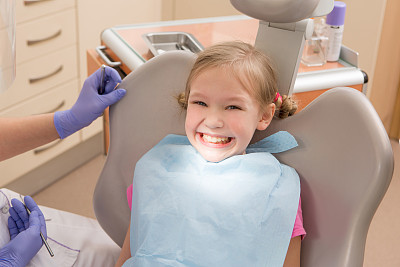The Essential Guide to Extracting a Tooth Safely and Comfortably for All Ages
Summary: Extracting a tooth is a necessary procedure that can be daunting for patients of any age. This essential guide explores the various aspects of safely and comfortably performing tooth extractions. It emphasizes the importance of understanding when an extraction is necessary, the techniques used to ensure minimal discomfort, post-extraction care, and considerations for different age groups. By addressing these points, the guide aims to provide a comprehensive overview that reassures patients and caregivers alike, ensuring a positive experience throughout the process.
1. Understanding the Need for Tooth Extraction

Tooth extraction may be required for various reasons, with the most common being dental decay, overcrowding, and infection. Understanding these factors can aid in recognizing the necessity of this procedure. When decay penetrates deeply into the tooth, it can lead not only to pain but also to systemic health issues if left untreated. Similarly, overcrowding can hinder proper alignment and cause orthodontic complications, necessitating the removal of one or more teeth to enable effective treatment.
An oral examination by a dentist is crucial for diagnosing conditions that might require extraction. Dentists use X-rays and visual assessments to evaluate the health of the teeth and surrounding structures. If a tooth is deemed non-restorable or poses a risk to other teeth, extraction can be the most viable solution to maintain overall oral health.
Understanding the reasons for extraction also helps alleviate anxiety among patients. Knowledge about why a tooth must be removed prepares patients psychologically, making the experience more comfortable when it ultimately occurs.
2. Techniques for Safe and Comfortable Extraction
Dental professionals employ several techniques to ensure that tooth extraction is carried out safely and with minimal discomfort. Local anesthesia is commonly administered to numb the area surrounding the tooth, allowing the procedure to proceed without pain. For anxious patients or specific scenarios, sedation options may be available, making the experience entirely stress-free.
Both simple and surgical extractions require varying methods based on the tooths condition and position. A simple extraction involves loosening the tooth with dental instruments and removing it, while a surgical extraction necessitates cutting through the gum and bone to extract teeth that are not fully erupted. Each technique is designed with patient comfort in mind, ensuring a gentle approach to removal.
The skill and experience of the dentist also significantly impact the comfort level of the procedure. Patients should seek professionals who prioritize compassion and are willing to explain each step. This transparency can ease anxiety and foster trust, improving the overall experience when undergoing a tooth extraction.
3. Post-Extraction Care Guidelines
Following tooth extraction, proper care is essential to promote healing and minimize complications. Patients should adhere to their dentists instructions regarding post-operative care, which typically includes rest, ice application, and dietary adjustments. Ice packs can help reduce swelling, while a soft diet aids in preventing irritation around the extraction site.
Maintaining oral hygiene is also crucial, but care should be taken not to disturb the extraction site. Gentle rinsing with warm salt water can promote healing and comfort, but vigorous swishing should be avoided until the area has healed significantly.
Monitoring for signs of complications, such as excessive bleeding or persistent pain, is also recommended. Patients should be aware of when to contact their dentist to address any concerns promptly, ensuring a smooth recovery process. Clear communication about the expected recovery timeline fosters confidence in patients and caregivers alike.
4. Special Considerations for All Age Groups
Tooth extraction procedures need to be adapted for different age groups, recognizing the unique challenges faced by children, adults, and the elderly. Pediatric patients may require special handling due to their heightened anxiety and less developed coping mechanisms. Dentists often employ child-friendly communication and sedation methods to ensure a supportive environment while performing extractions.
For adults, factors such as overall health and pre-existing conditions can influence both the extraction process and recovery. Chronic medical conditions may necessitate a pre-operative assessment to mitigate associated risks. Communication between dentists and patients is critical here, allowing for adjustments to the standard procedures if required.
In older adults, the condition of bone and gum tissue may complicate tooth extraction. Dentists must assess the individual’s oral health status carefully and may need to use specialized techniques to ensure comfort and minimize potential complications.
Summary:
Tooth extraction is a common dental procedure that can be performed safely and comfortably across all age groups. Understanding the reasons for extraction and the techniques available can help alleviate anxiety and promote a positive experience. Post-operative care is essential for healing, and adaptations may be necessary for different age levels. Each of these considerations ensures that patients feel cared for and supported throughout the entire process.
This article is compiled by Vickong Dental and the content is for reference only.


